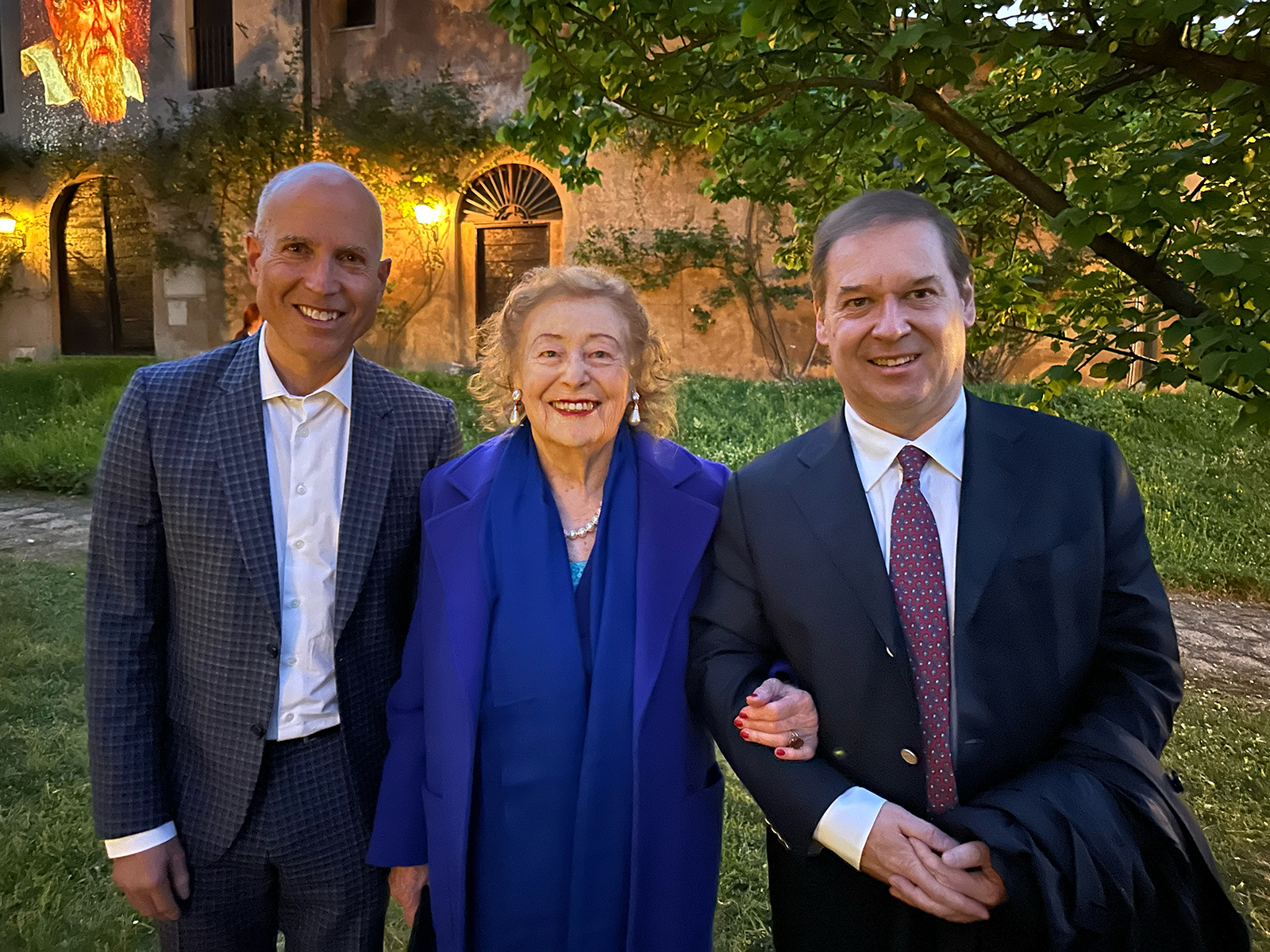David Spergel, the acclaimed astrophysicist and president of the Simons Foundation, considers that modern astronomy began on what is now the property of the American Academy in Rome when, on April 14, 1611, Galileo Galilei demonstrated his renowned perspicillum. On that occasion, surrounded by friends and colleagues where the Casa Rustica now presently stands, Galileo named this modified instrument the “telescope.”
Fast forward 413 years later, artists, scholars, and scientists gathered at the American Academy of Rome on April 15 to hear Spergel deliver his lecture “Physics as Aesthetics, Cosmology as a Historical Science: From Galileo to the Big Bang” as the inaugural Galileo Night Lecture.
Spergel’s presentation, responded to by the Italian scientist Sauro Succi, posited the idea that cosmologists are not so different from historians: both attempt to reconstruct the story of the past using incomplete observations. “I feel, in many ways more akin to historians, where we must recognize the incompleteness of the record we see,” said Spergel. “To recognize [this] as physicists, we are often driven by our sense of beauty, and that has turned out to be a powerful guide in our understanding.”

Just as scientists are currently seeing the Andromeda Galaxy as it existed a million years ago through a telescope, historians of the ancient world at the Academy are observing Rome as it was some two thousand years ago, albeit using different sets of tools. Like Galileo in 1611, artists and scholars from America and around the world climb the Gianicolo every year to ask questions and make observations. “Galileo as our first, if necessarily honorary, Fellow makes the point that the kind of integrated cross-disciplinary vision that makes AAR stand out not only among the foreign academies in Rome but in the global landscape of institutes and academies has its origins in an older predisciplinary culture of inquiry,” said AAR President Peter N. Miller, who moderated the evening’s discussion.
Spergel and Succi both emphasized the role of aesthetics in shaping our understanding of the universe, and how “beauty” and “elegance” can help or even hinder scientific discovery. But what exactly are aesthetics in physics? What is elegant about the Big Bang or black holes? Succi, who is widely known as being one of the founders of the successful Lattice Boltzmann method for fluid dynamics and soft matter, said that while aesthetics certainly has influenced scientists—especially in the goal of finding concise theories to explain complex phenomena—“beyond a certain level of complexity, we have to accept or speculate that nature starts to accept or maybe even likes some form of ugliness.”

To explain the possible pitfalls of applying aesthetics to scientific thought, Spergel cited one of Einstein’s most significant blunders. Einstein “understood that theory [of general relativity] predicted that that the universe was expanding or contracting, and that the universe had a beginning in time.” But the notion of a universe that had a beginning “went against his sense of beauty,” and this aesthetic inclination led him to incorrectly alter his theory—adding a “cosmological constant” to provide for a static universe.
Yet cosmologists find beauty in the universe’s balance of order and disorder, and elegance in mathematics as the “language of the universe.” They rely heavily on aesthetics, extrapolations, and observations from laboratory physics. Still, big questions remain, Spergel pointed out. What makes up the other ninety-five percent of the universe that we don’t understand yet? Why did the Big Bang happen in the first place? “Geometry is destiny,” said Spergel while demonstrating the different theoretical shapes of the universe that, depending on the theory, could determine its fate. Questions drive inquiry at AAR, a place where artists, writers, and humanists are constantly being shaped by their observations. While we may understand so little, for the astrophysicist who delivered the Academy’s first Galileo Night Lecture, that is elegant enough.